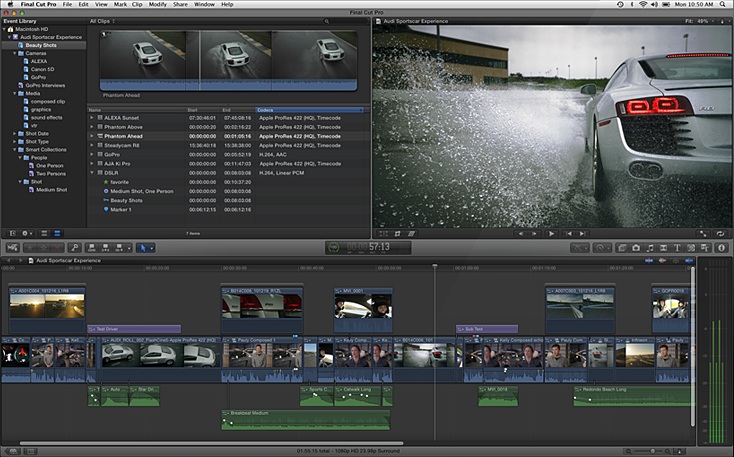Welcome to the second in a three-part series on shooting better video. (The first part, the introduction, can be found here.) In this post, we’re going to be looking at suggestions for equipment, both hardware and software, and why improving both of these can greatly improve the final product.
The Lavalier Microphone
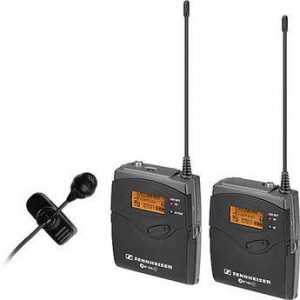 This is honestly the most important piece of equipment in your arsenal, and yet it is so often overlooked. If you can’t hear your subject that’s standing right in front of you, all of your efforts for a decent video are lost. Most video cameras have very sensitive microphones that are made to capture as much ambient noise as possible, to make it sound life-like. The side-affect of this is that whomever you’re doing the video of can be easily drowned out by background noise like cars driving by or other people talking. Attaching a lavalier mic to your subject assures that he or she is heard clearly and the ambient noise is eliminated or greatly reduced.
This is honestly the most important piece of equipment in your arsenal, and yet it is so often overlooked. If you can’t hear your subject that’s standing right in front of you, all of your efforts for a decent video are lost. Most video cameras have very sensitive microphones that are made to capture as much ambient noise as possible, to make it sound life-like. The side-affect of this is that whomever you’re doing the video of can be easily drowned out by background noise like cars driving by or other people talking. Attaching a lavalier mic to your subject assures that he or she is heard clearly and the ambient noise is eliminated or greatly reduced.
We’ve tried quite a few lavs here at PCG and honestly, there’s only one model we’ve found that should be considered, the Sennheiser G3 system. It’s certainly not cheap, but it does come in many different configurations and packages to suit your needs. These are studio-quality microphones and will give you the best audio quality.
2014 Video Equipment Buying Guide
It goes without saying that the better the video camera you’re using, the better the output will be. While smartphones go to war with each other over who shoots the best video, neither will compare to a true CCD camcorder. The quality of the lens, light sensors, image processors, zoom capabilities, etc, just can’t be matched by any smart phone. Your first purchase should absolutely be a true video camera.
Low Cost Option – Canon Vixia HF R52
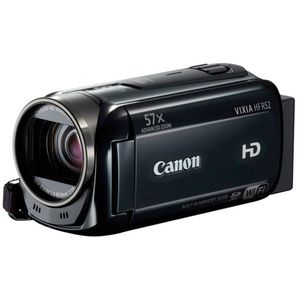 Even though it retails for only $400, Canon’s 2014 camcorder offering is a powerhouse that beats the other competitors in the same price bracket. It can shoot at 60 frames per second, in 1080 High Def. So if your videos are intended for Blu-Ray or just Youtube, you can adjust the R52’s settings to match your needs. There’s a built-in memory of 32Gb, enough for 17 hours of recording at a low setting, but there’s a slot for an addition memory card too.
Even though it retails for only $400, Canon’s 2014 camcorder offering is a powerhouse that beats the other competitors in the same price bracket. It can shoot at 60 frames per second, in 1080 High Def. So if your videos are intended for Blu-Ray or just Youtube, you can adjust the R52’s settings to match your needs. There’s a built-in memory of 32Gb, enough for 17 hours of recording at a low setting, but there’s a slot for an addition memory card too.
The camera has a 3 inch LCD viewscreen that is touch sensitive and allows you to get to all of the controls.
Mid-Range Step up – Sony PJ810
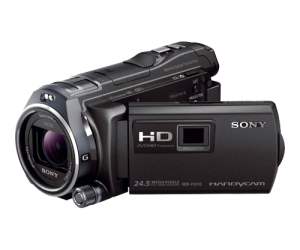 Moving up to the $1100 price point can get you the newest high-end consumer offering from Sony. The PJ810 has quite a few improvements up from the lower end models. The image processor is faster and more sensitive, so you’ll get much better results at lower light levels, with less noise or grain.
Moving up to the $1100 price point can get you the newest high-end consumer offering from Sony. The PJ810 has quite a few improvements up from the lower end models. The image processor is faster and more sensitive, so you’ll get much better results at lower light levels, with less noise or grain.
The Sony PJ810 also comes with a projector built right in, so you can display anything you’ve shot on the nearest wall or flat surface. You can also use a smartphone to view the playback.
The new Sony also has a new image stabilizer built in that erases some of the natural hand-held motion. It won’t substitute the use of a good tripod however, but if you plan on doing a lot of walking while filming, this feature shouldn’t be overlooked.
Lastly, this camera has what it calls Sound Targeting. It allows you to focus on a subject and highlight just the audio coming from there. So in theory, you could have someone talking in front of the camera and the background noises would be greatly diminished. This wouldn’t work nearly as well as using a lavalier microphone as I’ve discussed, but it’s still a big leap forward.
Pro Level – Sony HXR-NX3
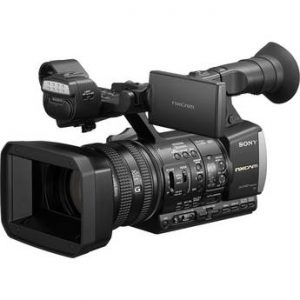 Now, if you want studio-level quality, meet the Sony HXR NX3 – and bring $3100 with you. This serious camera boasts three different sensors for image quality, which makes it superb for shooting in low light and other tricky situations. The lens is top of the line as well, to bring you the cleanest, sharpest videos. It has dual memory card slots which will automatically switch from one to the other when you run out of room. The NX3 boasts an impressive 1920×1080 video resolution and up to 60 fps.
Now, if you want studio-level quality, meet the Sony HXR NX3 – and bring $3100 with you. This serious camera boasts three different sensors for image quality, which makes it superb for shooting in low light and other tricky situations. The lens is top of the line as well, to bring you the cleanest, sharpest videos. It has dual memory card slots which will automatically switch from one to the other when you run out of room. The NX3 boasts an impressive 1920×1080 video resolution and up to 60 fps.
Video Editing Software
So you’ve got all this great footage, now what? You’ll need some serious software to help you cut it all up, and put it back together so it looks like a real movie. Video editing software helps you manage all your video projects and files. It also generally comes with a helping of special effects and editing presets that will make it all look professional too.
The two most common programs for use on the Mac are iMovie and Final Cut Pro, and with good reason. Both of these programs are very intuitive, and are made to get you up and running as soon as possible. iMovie is free, comes with the OSX operating system, while FCP will set you back $300. Final Cut is much more powerful, extensible, has many more special and editing effects, and has a much greater array of options when it comes to the exporting and encoding of video files. Nothing wrong with starting out on iMovie, then making the jump when you’re ready.
On a windows machine, Pinnacle Studio is a great place to start. It’s a comprehensive program that has enough features to get the job done, but in an interface that’s familiar and easy to use. When you’re ready to take the next step, there’s Adobe Premier Essentials. The learning curve for Adobe is considerably steeper however, but the reward is greater. Premier has the ability to be extended with plugins and add-ons, like Final Cut Pro, so it’s made for the more serious filmmaker.
Now that you have the equipment and the software, it’s time to start shooting! We’ll cover video sharing sites in the third and last part of this blog series.
